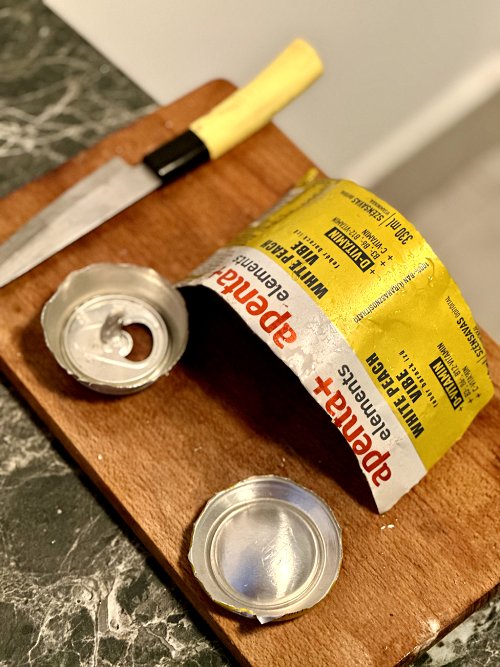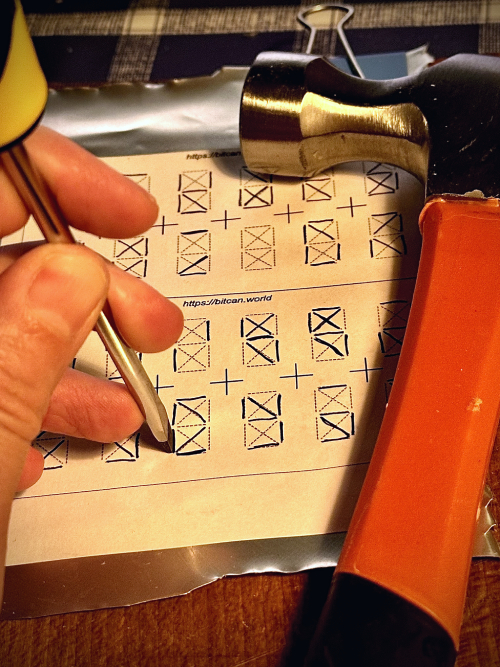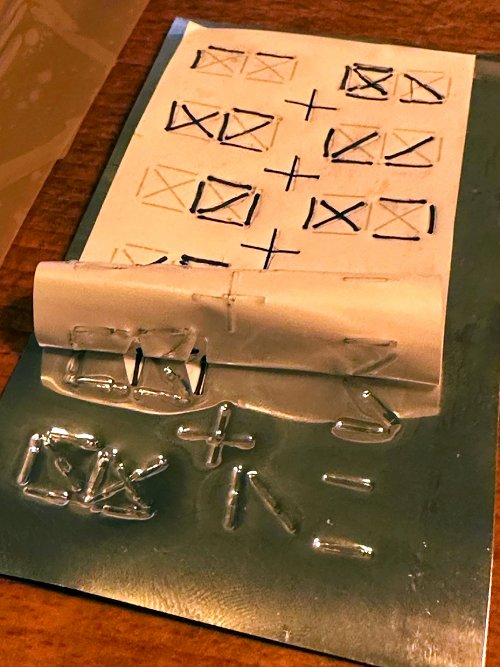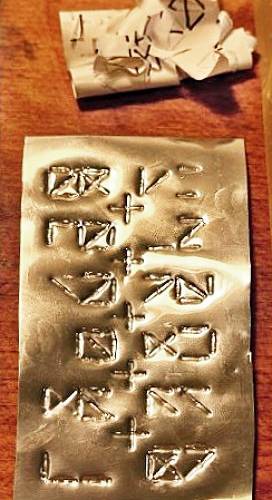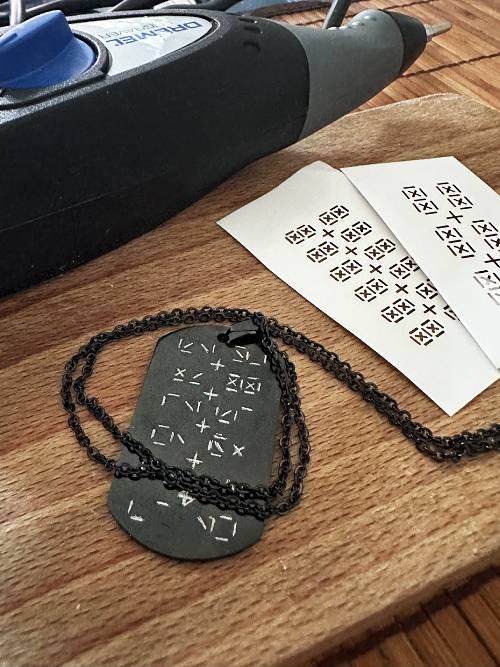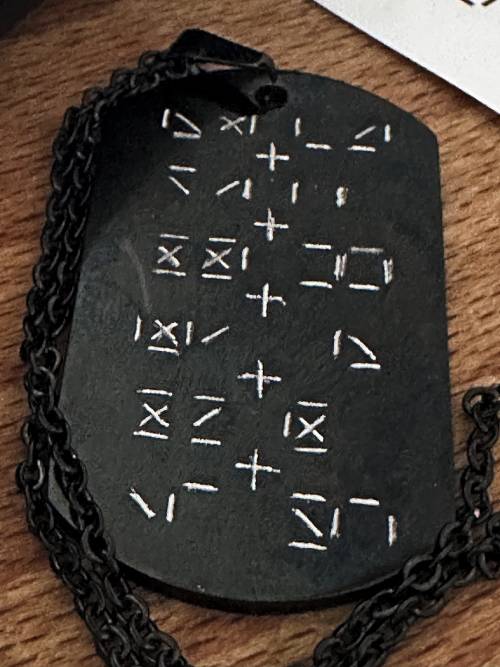 DIY Bitcoin Seed Storage
DIY Bitcoin Seed Storage
BitCan provides a cost-effective, DIY solution for securing Bitcoin mnemonic seed phrases - striking a balance between fragile paper wallets and heavy-duty metal plates.
Each binary-encoded glyph corresponds to a word from the BIP39 word list, allowing for discreet stamping onto common materials.
The design ensures that the medium isn't easily deciphered by unintended observers, such as cleaning staff or intruders.
Durable setup
To enhance fire resistance, you can also engrave the symbols onto stainless steel dog tags:
As a bonus, dog tags resemble a personal keepsake, which may deter accidental disposal while reducing the likelihood of deliberate theft.
Encoding Instructions
Sticker Template
Print the template, stick it on an aluminum can, draw the glyphs for your seed phrase on the template, then stamp through the sticker with a screwdriver.
Details
- Securely generate your mnemonic seed phrase using a trusted, offline hardware wallet in a private location.
- Flatten an aluminum can into a sheet (or use a thin stainless steel dog tag), then attach the printed template to the metal surface.
- Translate the words into glyphs, ensuring each corresponds accurately to the provided list.
- Stamp each glyph carefully onto the metal, double-checking for precision and verifying the sequence by reviewing it in reverse.
- Use a screwdriver for stamping the glyphs into the metal.
- To ensure security and privacy, store the stamped metal in a location that is both secure and discreet.
- Print the table below into a PDF and back it up.
Decoding Instructions
- First, transcribe all glyphs carefully onto a sheet of paper. This will serve as a more reliable reference than working directly from the plate.
- Identify the bottom square of each glyph first, as it provides a stable starting point for the decoding process.
- Then, identify the top square of the glyph to refine your search within the identified section of the word list.
- Alternatively, you can use binary search to navigate through the word list, since each line in the glyph halves the search area.
- Verify the transcribed seed phrase with your wallet to ensure its accuracy and integrity.
